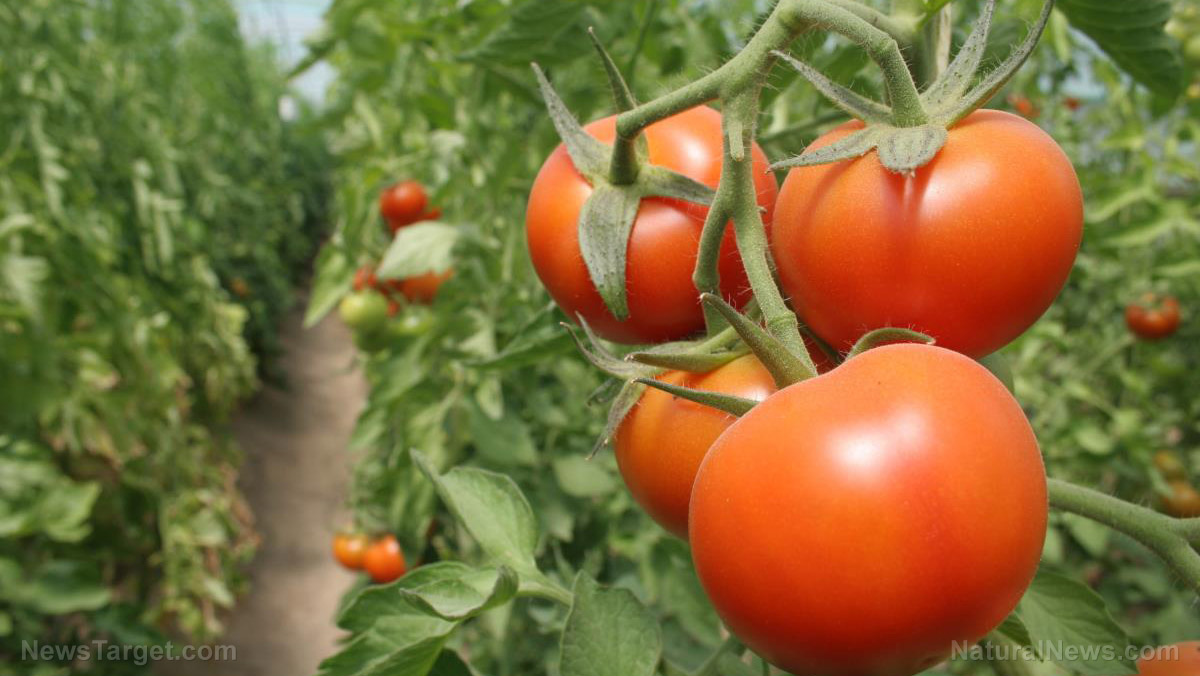 Parler
Parler Gab
Gab
Tomato varieties
Believe it or not, there are thousands of tomato varieties. These varieties come in different shapes and sizes, as well as flavor profiles. Listed below are some of the most popular tomato varieties for gardening:- Cherry tomatoes – Cherry tomatoes are bite-sized, tangy and very juicy. They can be eaten alone for a quick, healthy snack or added to veggie salads.
- Roma tomatoes – Roma tomatoes are naturally sweet and juicy. They are bigger than cherry tomatoes but not big enough to be used for slicing. Roma tomatoes are ideal for making sauces.
- Grape tomatoes – Grape tomatoes are roughly half the size of cherry tomatoes. They come in a unique oblong shape and are not as juicy as other varieties.
- Beefsteak tomatoes – Beefsteak tomatoes are large, firm and plump. You can use them for canning or making sandwiches.
- Heirloom tomatoes – Heirloom tomatoes are one of the more "natural" varieties because they are not the result of cross-pollination. Their deep and sweet flavor makes them ideal for making sauces.
How to grow tomatoes
Love the idea of growing tomatoes but not sure where to start? Just follow these tips:- Don't crowd tomato plants – Whether you're starting your plants from seeds or seedlings, make sure to keep them at least three feet apart from each other. Tomatoes need room to branch out. Crowded plots can inhibit their growth or lead to disease later on.
- Provide enough light – Tomato plants prefer strong, direct sunlight. If planting indoors, leave pots by a sunny window or, if necessary, provide artificial plant lighting.
- Provide air circulation – Tomato plants like to move with the breeze. This allows them to grow stems that are strong and sturdy. If you're planting tomatoes indoors, create a breeze by turning on a fan.
- Preheat garden soil – Tomatoes love warm temperatures and that goes for soil as well. Soil can be wet and cold after winter, so make sure to preheat the soil before sowing. To do that, just cover the soil with a sheet of black or red plastic a few weeks before planting.
- Dig deep holes – Tomato plants can grow roots along their stems so it's important to dig deep. You can also dig a shallow trench and transplant seedlings sideways. They will naturally grow towards the sun.
- Spread mulch – Once the soil is warm, it's time to start mulching. Mulch retains moisture, which helps keep the soil from drying out in the spring or summer. Don't mulch too soon as this can keep the soil cool for longer.
- Remove bottom leaves – Once the plants grow about three feet tall, prune the bottom leaves. They get the least amount of sunlight and are prone to soilborne diseases because they are close to the ground.
- Remove small suckers – Suckers are small shoots that appear where two stems meet. While harmless, suckers don't serve much of a purpose. They also consume energy so it's best to just remove them.
- Keep the soil moist – Young tomato plants need at least one inch of water every week. During very hot days, you may need to give them more. Once the plants produce fruit, you can taper off on watering.
- Pinch off the tips of main stems – If your tomatoes are taking a long time to ripen, try and pinch off the tips of the main stems. This trick encourages the plant to direct its energy into flowering.
Study shows antioxidants in cheese may protect blood vessels from salt damage
By Rose Lidell // Share
Supplementing with vitamin D found to improve blood pressure in overweight children
By Zoey Sky // Share
The end of meat? Dutch “green” policies force dairy farmer to cull 95% of his herd
By Ethan Huff // Share
Food supply 101: How to grow edible mushrooms in your home garden
By Zoey Sky // Share
Qatari study finds natural immunity is 97% EFFECTIVE against severe COVID even after 14 months
By Ramon Tomey // Share
Polyphenols in acai found to have a prebiotic effect that boosts digestive health
By Zoey Sky // Share





